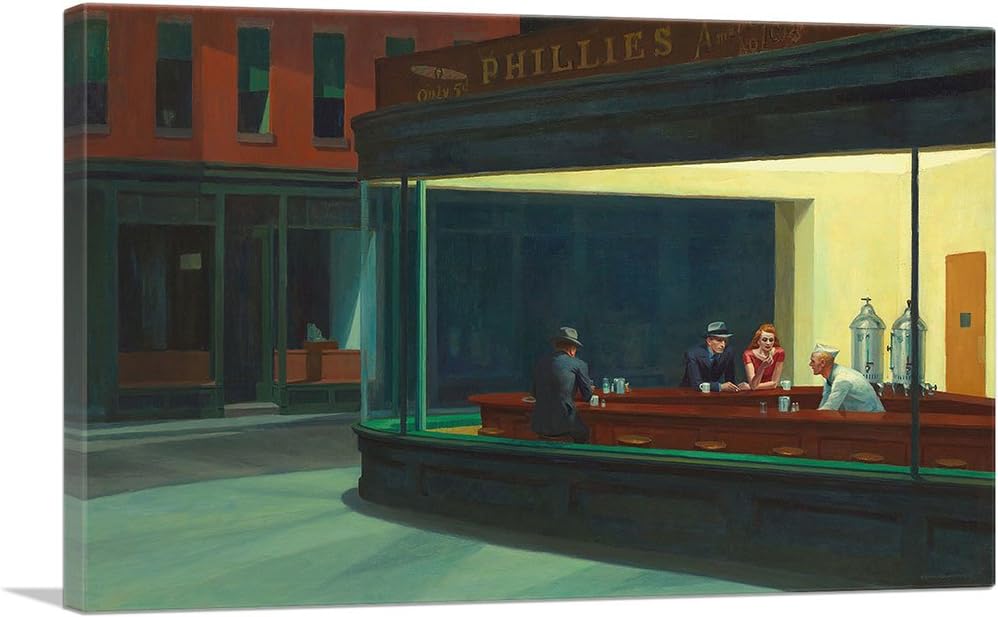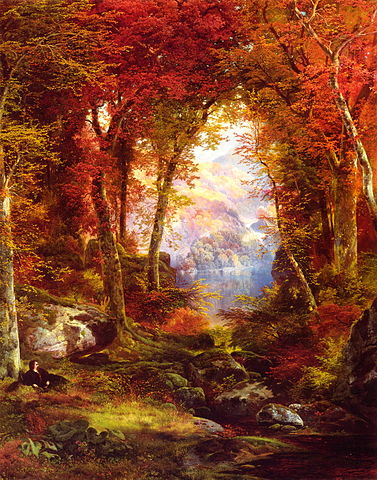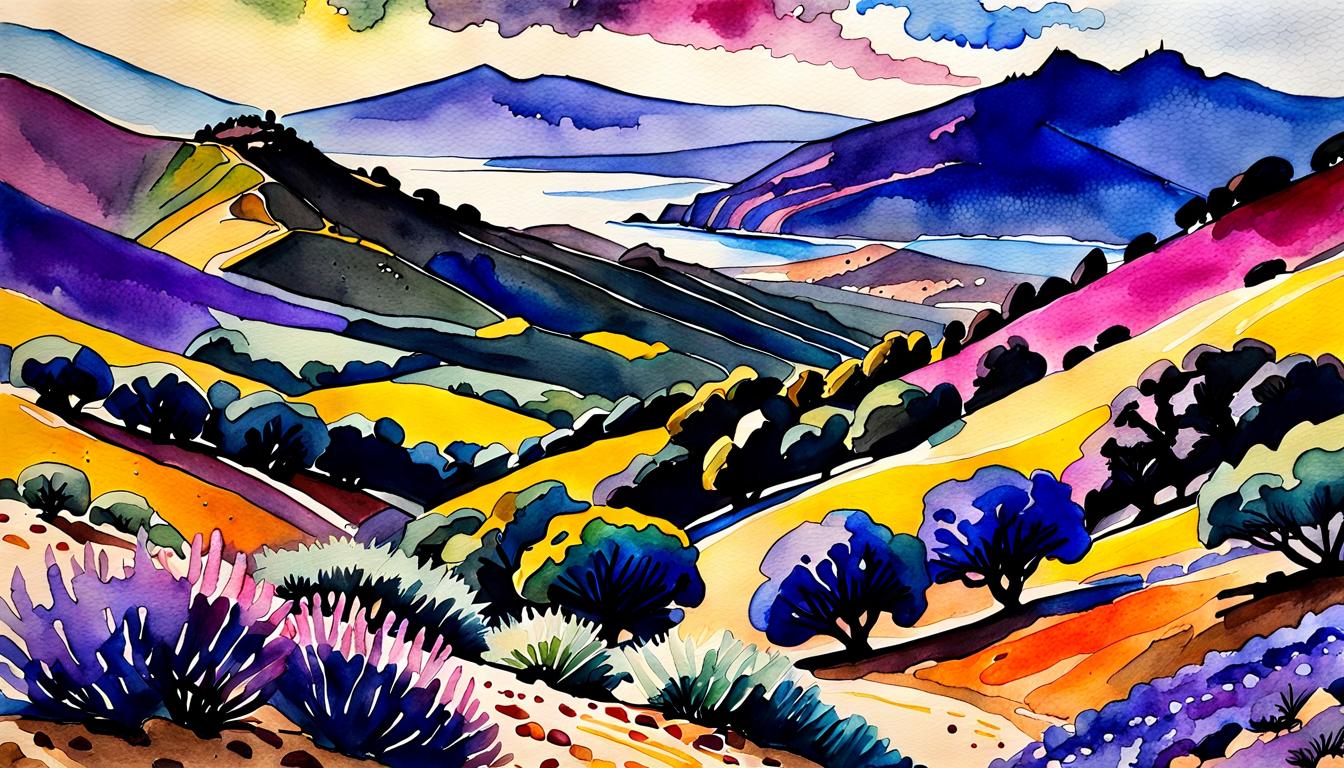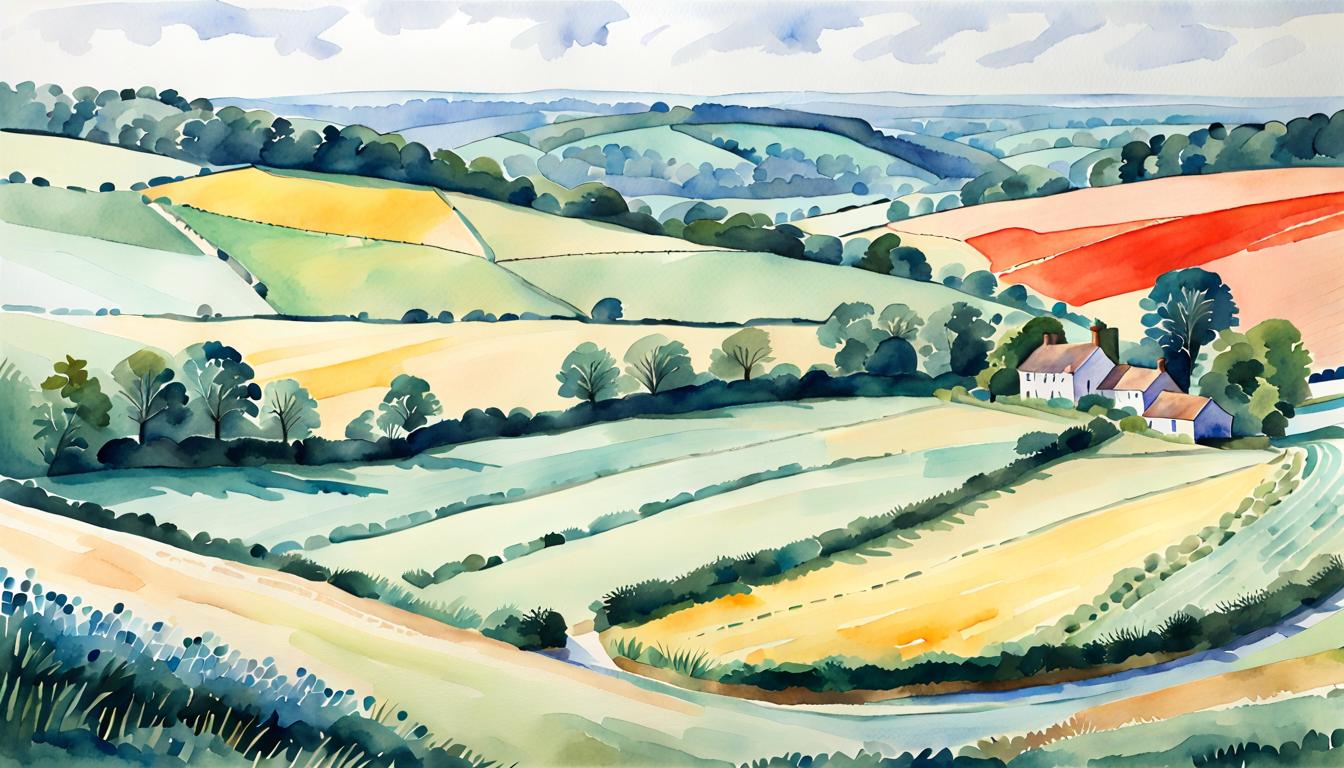Edward Hopper was one of the most influential American realist painters of the 20th century. He is best known for his oil paintings of urban scenes, such as Nighthawks and New York Movie, that capture the loneliness, isolation, and mystery of modern life. However, he was also a prolific and talented watercolorist, who used this medium to explore different aspects of his artistic vision. In this article, we will look at the history, characteristics, and significance of Edward Hopper’s watercolors, and how they reveal his unique perspective on America.
The Beginnings of Edward Hopper’s Watercolor Career
Hopper began painting watercolors in earnest in the early 1920s, when he was in his forties. He had studied oil painting and etching at the New York School of Art, under the guidance of Robert Henri and Kenneth Hayes Miller, who encouraged him to paint from life and to express his personal feelings. However, Hopper struggled to find his style and voice, and to sell his works. He worked as an illustrator for magazines and advertising agencies, but he was dissatisfied with this career and felt that it compromised his artistic integrity.
Hopper’s breakthrough came when he visited Gloucester, Massachusetts, in 1923, with his fellow art student and future wife, Josephine Nivison. There, he was inspired by the light, color, and atmosphere of the New England coast, and he started to paint watercolors of the houses, boats, and landscapes that he saw. He found watercolor to be a more spontaneous and expressive medium than oil, and he developed a distinctive technique of applying bold and transparent washes of color, leaving some areas of the paper white, and adding details with dark and dry brushstrokes. He also experimented with different perspectives, compositions, and cropping, creating dynamic and dramatic effects.
Hopper’s watercolors were well received by critics and collectors, and he had his first solo exhibition at the Frank K. M. Rehn Gallery in New York in 1924, which was a success. He sold 30 out of the 35 watercolors he showed, and he continued to exhibit and sell his watercolors throughout the 1920s and 1930s. He also received positive reviews from influential art magazines, such as The Arts and The American Magazine of Art, which praised his originality, realism, and mastery of the medium.
The Themes and Subjects of Hopper’s Watercolors
Hopper’s watercolors reflect his interest in the American scene, and his desire to portray the essence and spirit of his country. He traveled extensively throughout the United States, and painted watercolors of various regions, such as New England, Cape Cod, Maine, Vermont, Charleston, Mexico, and the West. He also visited Europe three times, in 1906, 1910, and 1926, and painted watercolors of Paris, London, and other cities. However, he was more drawn to the American landscape and culture, and he said, “I think I am more interested in America than in any other place. I have tried to find out what is indigenous and what is common to the whole country.”
Hopper’s watercolors depict a wide range of subjects, such as houses, barns, churches, lighthouses, bridges, trains, cars, gas stations, motels, theaters, restaurants, and people. However, he did not paint them as mere representations of reality, but as expressions of his vision and emotions. He said, “My aim in painting has always been the most exact transcription possible of my most intimate impressions of nature.” He also said, “Great art is the outward expression of an inner life in the artist, and this inner life will result in his vision of the world.”
Hopper’s watercolors often convey a sense of loneliness, solitude, and alienation, as he depicted empty or deserted scenes, or people who seem isolated, detached, or lost in their thoughts. He also suggested a sense of mystery, ambiguity, and tension, as he left some elements of the scenes unclear, or implied a narrative or a conflict that is not fully revealed.
He said, “What I wanted to do was to paint sunlight on the side of a house.” However, he also added, “Maybe I am not very human – what I wanted to do was to paint sunlight on the side of a house and then people would say, ‘what does that mean?’”
Hopper’s watercolors also reflect his admiration and nostalgia, and his concern and criticism for the present. He often painted old or traditional buildings and structures, such as colonial houses, Victorian mansions, or wooden bridges, that contrasted with the modern and industrial elements of the landscape, such as skyscrapers, billboards, or highways. He also painted scenes that showed the impact of urbanization, commercialization, and tourism on the natural and rural environment, such as gas stations, motels, or roadside attractions.
He said, “The American scene painters nauseate me with their optimistic pretense of pure American life. I like to paint the sad desolation of our American landscape.”
The Legacy and Influence of Hopper’s Watercolors
Hopper’s watercolors are considered to be among the finest and most influential examples of American watercolor painting. They have been widely exhibited and collected by major museums and institutions, such as the Smithsonian American Art Museum, the National Gallery of Art, the Whitney Museum of American Art, the Metropolitan Museum of Art, and the Museum of Modern Art. They have also inspired and influenced many artists, such as Andrew Wyeth, Edward Ruscha, David Hockney, and Eric Fischl, who have admired and emulated Hopper’s style, technique, and vision.
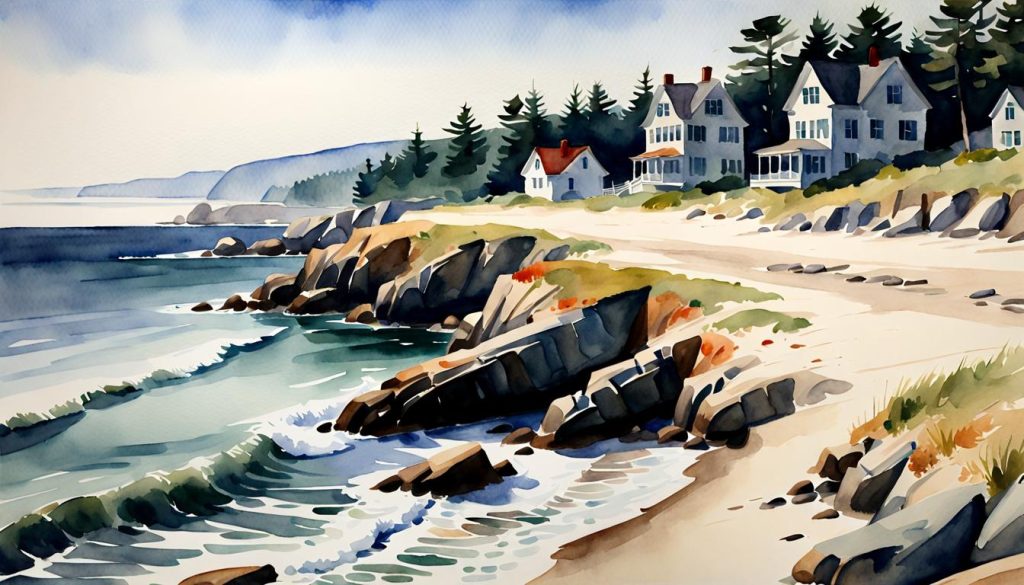
Hopper’s watercolors have also had a significant impact on popular culture, especially on film and literature. Many filmmakers, such as Alfred Hitchcock, Wim Wenders, Terrence Malick, and Sam Mendes, have used Hopper’s watercolors as references or sources of inspiration for their cinematography, lighting, composition, and mood. Many writers, such as John Updike, Joyce Carol Oates, Don DeLillo, and Paul Auster, have also incorporated Hopper’s watercolors into their stories, poems, essays, and novels, as symbols, metaphors, or motifs.
Hopper’s watercolors have also captured the imagination and interest of the general public, who have recognized and appreciated his unique and authentic portrayal of America. Hopper’s watercolors have become icons of American art and culture, and have resonated with the feelings and experiences of many people.
As one critic wrote,
“Hopper’s watercolors are not only beautiful, but they are also true. They are true to the American scene, true to the American spirit, and true to the American heart.”
FAQs
What is the difference between Hopper’s watercolors and his oil paintings?
Hopper’s watercolors and his oil paintings are both expressions of his artistic vision and his personal impressions of America. However, they differ in some aspects, such as:
- Medium: Hopper used watercolor as a more spontaneous and flexible medium than oil, and he developed a distinctive technique of applying bold and transparent washes of color, leaving some areas of the paper white, and adding details with dark and dry brushstrokes. He also used different types of paper, such as Whatman, Strathmore, and Fabriano, to achieve different effects.
- Style: Hopper’s watercolors are more colorful, luminous, and vibrant than his oil paintings, which are more subdued, somber, and muted. His watercolors are also more fluid, loose, and sketchy than his oil paintings, which are more solid, precise, and refined. His watercolors are also more experimental and varied than his oil paintings, which are more consistent and coherent.
- Subject: Hopper’s watercolors and his oil paintings cover a wide range of subjects, such as houses, boats, landscapes, and people. However, his watercolors tend to focus more on the natural and rural environment, while his oil paintings tend to focus more on the urban and industrial environment. His watercolors also tend to depict more daytime scenes, while his oil paintings tend to depict more nighttime scenes. His watercolors also tend to show more human presence and activity, while his oil paintings tend to show more human absence and inactivity.
How many Watercolors did Hopper paint?
Hopper painted about 400 watercolors in his lifetime, from 1893 to 1965. He painted most of them in the 1920s and 1930s, when he was in his prime as a watercolorist. He painted fewer watercolors in the 1940s and 1950s, when he focused more on his oil paintings. He painted his last watercolor in 1965, two years before his death.
Most Famous Hopper Watercolors?
Hopper’s watercolors are all remarkable and memorable, but some of them stand out as his most famous and iconic works. Here are some examples of his most celebrated watercolors, and what they represent:
| Title | Description | Date | Gallery or Current Location |
|---|---|---|---|
| The Mansard Roof | Hopper’s first big break, a watercolor of a seaside home in Gloucester, MA. | 1923 | Brooklyn Museum |
| White River at Sharon | Watercolor and pencil on paper depicting a river landscape. | 1937 | Smithsonian American Art Museum |
| Universalist Church | Watercolor over graphite on cream wove paper. | 1926 | Princeton University Art Museum |
These are just some of examples of Hopper’s watercolors, and there are many more to discover and appreciate. Hopper’s watercolors are not only beautiful, but they are also meaningful and powerful, as they reveal his unique vision of America.
